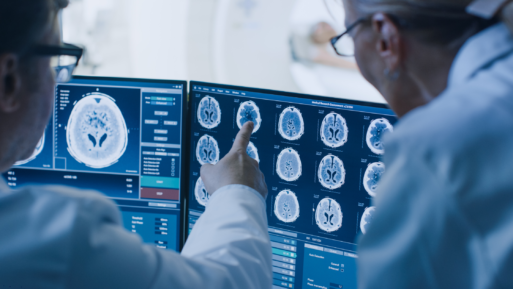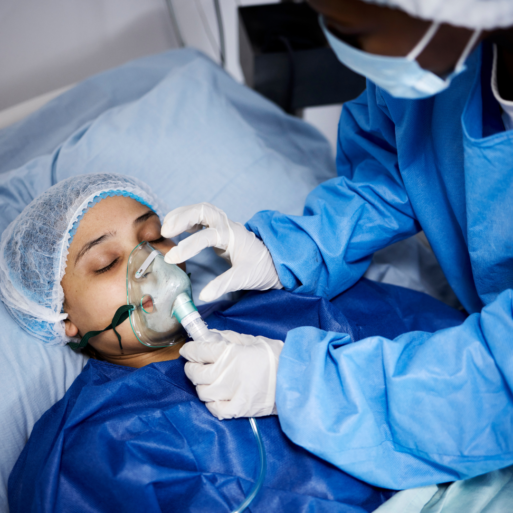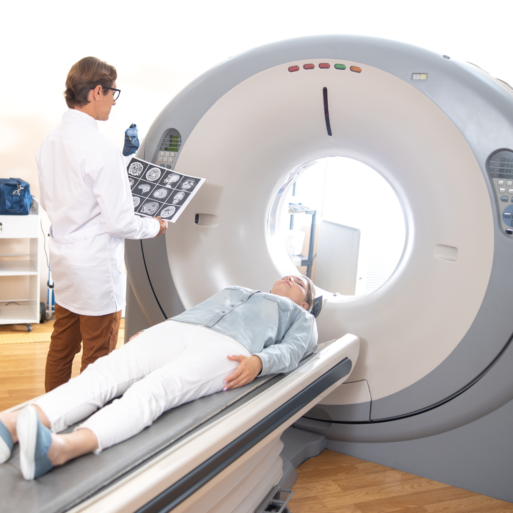
A new study has revealed that approximately 25% of patients with severe brain injuries experience something called Cognitive Motor Dissociation, or “covert awareness.” It’s as scary as it sounds: researchers are just now learning that some patients who were believed to be unaware of their surroundings actually have some level of consciousness, without any observable way to express their presence. This has serious implications for the care of brain-injured patients, and offers some hope for better treatments and prognosis.
Current Practice
When a patient with a brain injury is unresponsive, it is standard procedure for a doctor to perform some basic tests to determine if they might still have some level of awareness. Despite our technological medical advances, these tests are pretty primitive: calling the patient’s name, clapping near their ear or inserting a cotton swab in their nose. If those fail to get a reaction, sometimes a doctor will perform a “sternal rub,” using their knuckles to knead the patient’s sternum (which is surprisingly painful, but won’t cause injury). If the patient still doesn’t respond to any of that stimulus, they are believed to have lost consciousness and are thus unaware of their surroundings.
Once a patient is determined to be unconscious – in a coma or a vegetative state – their treatment is largely focused on caring for their body: trying to reverse whatever caused the brain injury (if possible), providing nutrition and fluids, breathing and circulation support, and preventative care to fight off bedsores, infections or deep vein thrombosis. As it stands right now, much of the mental stimulation is left for caregivers and family members to visit, read to, talk to or play music for the patient. Although this can be helpful, this new study may lead to different medical standards and hospital care in the future.

The Study
The international study, co-led by Weill Cornell Medicine and New York-Presbyterian researchers, was the largest ever investigation of the prevalence of covert awareness. It found that an alarming percentage of patients with severe brain injury can show clear signs of cognitive function on brain scans in response to requests to carry out complex mental work, even when they can’t move or speak.
The study looked at 353 patients who, from the outside, seemed to have lost consciousness due to a brain injury. Of these patients, 241 were diagnosed as being in a coma, a vegetative state, or having only minimal consciousness.
Essentially, researchers repeatedly asked each patient to perform a series of continuous motor tasks (like “keep wiggling your toes”), as well as motor-related cognitive tasks (“keep imagining wiggling your toes”) for multiple bouts of 15-30 seconds while under observation of either electroencephalography readouts and/or functional magnetic resonance imaging scans. (Unlike a standard MRI, which produces 3D images of the brain, a functional MRI measures activity in the brain based on blood flow. When conscious people are told to follow a command, certain areas of the brain become more active, and blood flow to those areas will increase.) The team then compared the results with those of healthy subjects who were asked to perform the same tasks.
The results showed that 25% of the 241 patients who were previously deemed unconscious were able to perform the cognitive tasks, as demonstrated by matching patterns of EEG and/or fMRI-measured brain activity. That means that 1 in 4 brain-injured patients are likely processing their external world without any way to communicate that to anyone.

The Implications of the Study’s Results
Previous, smaller studies estimated that around 10-20% of unresponsive patients could be experiencing covert awareness, but this study alarmed researchers who believe that the number is, in fact, likely much higher. Patients with severe brain injuries have moments throughout the day during which their brain may perform better or worse than usual, referred to as “fluctuations in arousal.” Dr. Nicholas Schiff, a neurologist and author of the study, believes that these fluctuations impacted their results, making 25% a depressingly conservative finding.
Equally alarming is the fact that many hospitals don’t have the technology needed in order to properly assess a patient’s level of consciousness to this degree, making it difficult to ensure they will get the care they need. “They’re going to be treated as if they’re fully unresponsive,” Schiff told Aria Bendix in an article for NBC News. “No one’s going to guess that they’re there.”
The findings do offer some degree of hope, however. The study will likely lead investigators down several new lines of research, such as finding easier methods for detecting CMD, as well as the exploration of CMD’s potential clinical value. Prior studies suggest that patients with some level of covert awareness have a greater chance of recovery compared with those who aren’t able to perform cognitive tasks, so this has massive implications regarding life-support decisions and the degree of engagement of caregivers and family members. In addition, researchers hope it will lead to a better understanding of potential interventions, like brain-computer interfaces, implants or neuromodulation (using electrical currents to alter brain activity).

 New Study Reveals 1 in 4 Unresponsive Hospital Patients Experience “Covert Awareness”
New Study Reveals 1 in 4 Unresponsive Hospital Patients Experience “Covert Awareness”


 How Dare You Die Now!
How Dare You Die Now!
 Debating Medical Aid in Dying
Debating Medical Aid in Dying
 “Help Me, Helen”
“Help Me, Helen”














